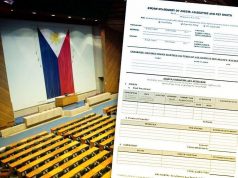Philippines losing digital edge — IMD
FRESH from a drop in overall competitiveness position last month, the Philippines suffered a similar fall in the digital field in an annual report of the International Institute for Management Development (IMD).
The Philippines dropped 10 rungs from last year to 56th place out of 63 economies in IMD’s World Digital Competitiveness Ranking 2018 — “one of the largest drops in the overall digital ranking” — and ranked 12th among the 14 Asia-Pacific economies covered, the Switzerland-based business school reported on Tuesday.
The report followed the release late last month of IMD’s World Competitiveness Rankings that saw the Philippines falling nine notches to 41st place out of 63 economies — “the most significant drop” in Asia — and ranking 13th among 14 Asia-Pacific economies.
“The objective of the digital competitiveness ranking is to assess the extent to which a country adopts and explores digital technologies leading to transformation in government practices, business models, and society in general,” read the report, which IMD said in a statement “is an offshoot publication of the World Competitiveness Yearbook.”
The economies are ranked on 50 criteria, grouped into three factors: knowledge, technology and future readiness.
“The Philippines’ low ranking relative to some Southeast and East Asian economies indicate that we have a lot of catching up to do with countries that we consider peers,” the Asian Institute of Management Rizalino S. Navarro Policy Center for Competitiveness (AIM RSN PCC), IMD’s Philippine country partner for the annual survey, said in a statement.
“The competitiveness game is a race. We are racing against not just our historical performance, but more importantly against the performance of our peers,” AIM RSN PCC added.
“If we are to attract the interest of investors in this digital age, we will need to up our game.”
Gauged against the three main factors, the Philippines ranked 50th in terms of knowledge (measures know-how to develop and adapt to new technologies), three rungs up from 52nd place in the 2017 report; but dropped by nine places to 52nd from 43rd in terms of future readiness (measures preparedness to exploit and adapt to digital transformation) and by seven spots to a “low” 58th from 51st in terms of technology (measures how supportive the regulatory environment is for digital technologies to develop).
The United States, Singapore, Sweden, Denmark, Switzerland, Norway, Finland, Canada, the Netherlands and the United Kingdom occupied the first to 10th places globally.
Singapore (second globally from first in the 2017 report) topped the Asia-Pacific list, followed by Hong Kong (11th from seventh), Australia (13th from 15th), South Korea (14th from 19th), Taiwan (16th from 12th), New Zealand (19th from 14th), Japan (22nd from 27th), Malaysia (27th from 24th), China (30th from 31st), Thailand (39th from 41st) and India (48th from 51st) ahead of the Philippines.
Ranking below the Philippines on the global list were Brazil (57th from 55th in the 2017 report), Ukraine (58th from 60th), Colombia (59th from 58th), Peru (60th from 62nd), Mongolia (flat at 61st from the 2017 report), Indonesia (62nd from 59th) and Venezuela (flat at 63rd). — Janina C. Lim




